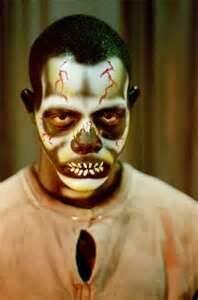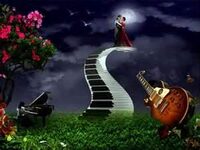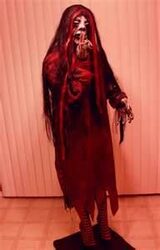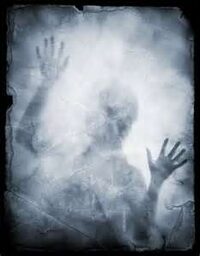The World Of Voodoo
Voodoo is a derivative of the world’s oldest known religions which have been around in Africa since the beginning of human civilization. Some conservative estimates these civilizations and religions to be over 10 000 years old. This then identify Voodoo as probably the best example of African syncretism in the Americas. Although its essential wisdom originated in different parts of Africa long before the Europeans started the slave trade, the structure of Voodoo, as we know it today, was born in Haiti during the European colonization of Hispaniola. Ironically, it was the enforced immigration of enslaved African from different ethnic groups that provided the circumstances for the development of Voodoo. European colonists thought that by desolating the ethnic groups, these could not come together as a community. However, in the misery of slavery, the transplanted Africans found in their faith a common thread.
They began to invoke not only their own Gods, but to practice rites other than their own. In this process, they comingled and modified rituals of various ethnic groups. The result of such fusion was that the different religious groups integrated their beliefs, thereby creating a new religion: Voodoo. The word "voodoo" comes from the West African word "vodun," meaning spirit. This Afro-Caribbean religion mixed practices from many African ethnics groups such as the Fon, the Nago, the Ibos, Dahomeans, Congos, Senegalese, Haussars, Caplaous, Mondungues, Mandinge, Angolese, Libyans, Ethiopians, and the Malgaches.
Within the voodoo society, there are no accidents. Practitioners believe that nothing and no event has a life of its own. That is why "vous deux", you two, you too. The universe is all one. Each thing affects something else. Scientists know that. Nature knows it. Many spiritualists agree that we are not separate, we all serve as parts of One. So, in essence, what you do unto another, you do unto you, because you ARE the other. Voo doo. View you. We are mirrors of each others souls. God is manifest through the spirits of ancestors who can bring good or harm and must be honored in ceremonies. There is a sacred cycle between the living and the dead. Believers ask for their misery to end. Rituals include prayers, drumming, dancing, singing and animal sacrifice.
The serpent figures heavily in the Voodoo faith. The word Voodoo has been translated as "the snake under whose auspices gather all who share the faith". The high priest and/or priestess of the faith (often called Papa or Maman) are the vehicles for the expression of the serpent's power. The supreme deity is Bon Dieu. There are hundreds of spirits called Loa who control nature, health, wealth and happiness of mortals. The Loa form a pantheon of deities that include Damballah, Ezili, Ogu, Agwe, Legba and others. During Voodoo ceremonies these Loa can possess the bodies of the ceremony participants. Loa appear by "possessing" the faithful, who in turn become the Loa, relaying advice, warnings and desires. Voodoo is an animist faith. That is, objects and natural phenomena are believed to possess holy significance, to possess a soul. Thus the Loa Agwe is the divine presence behind the hurricane.
Music and dance are key elements to Voodoo ceremonies. Ceremonies were often termed by whites "Night Dancing" or "Voodoo Dancing". This dancing is not simply a prelude to sexual frenzy, as it has often been portrayed. The dance is an expression of spirituality, of connection with divinity and the spirit world.
Voodoo is a practical religion, playing an important role in the family and the community. One's ancestors, for instance, are believed to be a part of the world of the spirits, of the Loas, and this is one way that Voodoo serves to root its participants in their own history and tradition. Another practical aspect of Voodoo ceremonies is that participants often come before the priest or priestess to seek advice, spiritual guidance, or help with their problems. The priest or priestess then, through divine aid, offer help such as healing through the use of herbs or medicines (using knowledge that has been passed down within the religion itself), or healing through faith itself as is common in other religions. Voodoo teaches a respect for the natural world.
Unfortunately, the public’s perception of voodoo rites and rituals seems often to point to the evil or malicious side of things. There are healing spells, nature spells, love spells, purification spells, joyous celebration spells. Spirits may be invoked to bring harmony and peace, birth and rebirth, increased abundance of luck, material happiness, renewed health.The fact is, for those who believe it, voodoo is powerful. It is also empowering to the person who practices it.
Despite Voodoo's noble status as one of the worlds oldest religions, it has been typically characterized as barbaric, primitive, sexually licentious practice based on superstition and spectacle. Much of this image however, is due to a concerted effort by Europeans, who have a massive fear of anything African, to suppress and distort a legitimate and unique religion that flourished among their enslaved Africans. When slavers brought these peoples across the ocean to the Americas, the African's brought their religion with them. However, since slavery included stripping the slaves of their language, culture, and heritage, this religion had to take some different forms. It had to be practiced in secret, since in some places it was punishable by death, and it had to adapt to the loss of their African languages. In order to survive, Voodoo also adopted many elements of Christianity. When the French who were the colonizers of Haiti, realized that the religion of the Africans was a threat to the colonial system, they prohibited all African religion practices and severely punished the practitioners of Voodoo with imprisonment, lashings and hangings. This religious struggle continued for three centuries, but none of the punishments could extinguished the faith of the Africans. This process of acculturation helped Voodoo to grow under harsh cultural conditions in many areas of the Americas.
Voodoo survives as a legitimate religion in a number of areas of the world, Brazil where it is called "Candomblé" and the English speaking Caribbean where it is called “Obeah”. The Ewe people of southern Togo and southeastern Ghana -- two countries in West Africa -- are devout believers. In most of the United States however, white slavers were successful in stripping slaves of their Voodoo traditions and beliefs. Thus Voodoo is, for most African Americans, yet another part of their heritage that they can only try to re-discover.
The strength that the Africans in Haiti gained from their religion was so strong and powerful, that they were able to survive the cruel persecution of the French rulers against Voodoo. It was in the midst of this struggle that the revolution was conspired. The Voodoo priests consulted their oracle and learned how the political battle would have to be fought in order for them to be victorious. The revolution exploded in 1791 with a Petr— ritual and continued until 1804 when the Haitians finally won independence. Today the system of Voodoo reflects its history. We can see the African ethnic mixture in the names of different rites and in the pantheon of Gods or Loas, which is composed of deities from all parts of Africa.
Origins of New Orleans Voodoo
In Haiti, voodoo played an integral role in slave rebellions that led to Haitian independence in the late 18th century. At that time, some Haitian landowners fled Haiti to settle in New Orleans, Louisiana. Liberated Black Haitians also fled to New Orleans.
The Haitian influx, Africans from French colonies and slaves directly from Africa laid the foundation for voodoo in New Orleans. Voodoo fused with catholic beliefs meant that saints and deities became interchangeable for followers of both religions.
Differences between Haitian Vodou and New Orleans Voodoo
New Orleans Voodoo is different from Haitian Vodou.
- New Orleans voodoo has more emphasis on magic than on religion.
- Live snakes were used in New Orleans Voodoo.
- Voodoo was not suppressed in the United States like in Haiti, though it was officially forbidden during the early voodoo days.
- The priests and priestesses in New Orleans are called kings and queens.
- There was more emphasis on magical charms, gris-gris bags, voodoo dolls in New Orleans.
- A succession of highly revered queens ruled the voodoo community in New Orleans.
What is Gris-gris in Voodoo?
Gris-gris comes from the french word for grey. It is used to symbolize a combination of white and black magic. In New Orleans, white charms are called juju and black charms are called mojo. Gris-gris are considered the most powerful and are the most expensive of charms. The Gris-gris amulets consist of a combination of potions of herbs and ingredients like, hair, pepper, and animal skin in a small leather bag.
John Montenet or Dr.John - Voodoo King of New Orleans
One of the most powerful of voodoo doctors in New Orleans was Dr. John. He practiced in Congo Square, a legal meeting place. He could read the future, read minds, cast spells, concoct gris-gris and even cure illnesses.
He was an African priest and a freed slave, whose voodoo skills made him wealthy. Dr. John was honored in New Orleans as an ancestral spirit after his death.
Marie Laveau - Voodoo Queen of New Orleans
Many people equate voodoo with Marie Laveau. She is remembered as a powerful and charismatic woman whose voodoo rituals at Congo Square captured the attention and awe of the entire community in the mid 19th century. She is said to have remained a Catholic, and her healing methods often involved a prayer at St. Louis Cathedral.
The first half of the 19th century is the golden age of voodoo. After the Civil War, voodoo went into obscurity, but has re-emerged in the recent times. The voodoo history of New Orleans continues to fascinate visitors to the city, to this day.
So what is a "urban lengend"? A urban legend or urban myth is a form of modern folklore consisting of apocryphal stories that those who tell the stories ussually believe them to be true. Like all folklore urban legends are not necessarily false, but have been distorted, exaggerated or sensationalized over time. Despite the name urban legend, a typical urban legend does not usually originate in the urban areas. rather the term is in reference to a modern legend.
Some times urban legends are repeated in news stories and in resent years distributed by email. You often hear people say this story happened to a "friend of a friend" (FOAF) has become a commonly used term when recounting these stories.
Some urban legends have changed very little over years with only minor changes to suit regional or cultural variations.
According to Wikipedia the term urban legend as used by folklorists has appeared in print since at least 1968. Jan Harold Brunvand, Professor of English at the University of Utah introduce the term to the general public in a series of books published in 1981. He used his collection of legends, "The vanishing Hitchhiker, "American Urban legends" & there meanings (1981) to make a couple couple of points; first that legends and folklore do not occur exclusively in primitive or traditional societies and second that one could learn much about urban and modern culture by studying such tales and stories.
Many urban myths are framed as complete stories with plots and charcators. The appeal of a typical urban legend is elements of mystery, horror, suspence, fear or humor. Many urban legends are represented as warnings or cautionary tales, others are versions of misinformation.
Banshees are creatures from Irish mythology. It is said that when a citizen from an Irish village died, a woman, also referred to as "keeners", would sing a traditional lament or modern Irish caoineadh (pronounced kweenyah) at their funeral. However, they can only cry for five great Gaelic families: the O'Gradys, the O'Neills, the O'Briens, the O'Connors, and the Kavanaghs (this list has extended with intermarriages). Tales recount a fairy woman was associated with them and would make an appearance after a death in the family, making an appearance or sound to intimation of the death.
When these narratives were first translated into English, a distinction between the "banshee" and other fairy folk was introduced. However, this distinction did not exist in the original stories in their Gaelic forms. The funeral lament became a mournful cry or wail. A death in the family or one's own death was predicted upon hearing this wail or seeing the banshee. In 1437, King James I of Scotland was approached by an Irish seeress who fortold his murder by the instigation of the Earl of Atoll. That isn't the only record of banshees or prophetess in human form. There are several attending the great houses of Ireland and the courts of local Irish Kings.
A banshee's appearance differs among stories. They basically dress in white with long, fair hair which they brush with a silver comb (possibly a detail confused with mermaid myths). They have also been known to dress in green or black with a grey cloak. Although, she appears in many forms: a young woman, a stately matron, or a raddled old hag. These three forms are said to represent the triple aspects of the Celtic goddess of war and death known as Badhbh, Macha and Mor-Rioghain. She may also appear as a washer-woman, washing the blood stain clothes of those who are about to die. In that form, she is known as bean-nighe. Banshees have also been known to take animal form that of a hooded crow, stoat, hare and weasel. These animals were associated with witchcraft in Ireland.




